
新月:赵文量、杨雨澍回顾展
策展人:苏伟、冯兮
助理策展人:杨天歌、郑亚惠
开幕式:2018年3月24日星期六下午两点
展期:2018年3月24日—7月1日
地点:北京中间美术馆
2018年3月24日,《新月:赵文量、杨雨澍回顾展》将在北京中间美术馆开幕。展览围绕赵文量和杨雨澍——这两位从50年代创作至今的艺术家的工作,力求完整、真实地还原他们在艰难生活中开辟的艺术道路。他们是60年代松散的绘画团体“玉渊潭画派”和诞生于70年代的“无名画会”的核心人物,以独特的方式见证了中国社会的变迁和美术潮流的演进。“新月”展希望通过这个兼具研究、挖掘和再想象的案例呈现,勾描对于我们今天来说一些仍然重要和具有深刻关联性的理论议题。在无法摆脱虚无主义情境的当下,这个展览也希望通过激发创作个案与研究的对话,讨论受压抑的历史经验和美学经验如何影响和塑造今天关于创作的价值观和意识。
赵文量(1937—,生于哈尔滨)和杨雨澍(1944—,生于北京),是两位都生于1949年建国以前的老先生,他们可以说完整地经历了1949年新中国成立至今社会和艺术的变迁。两人于50年代末在学画的经历中相识,并从此开始了这种亦师亦友的友谊。1961年起,杨雨澍开始跟随赵文量学画。他们的一生经历坎坷,生活一直困窘,绘画成为了他们生命的核心和唯一寄托。自1992年起,他们共同居住在北京方庄一所狭小的居室内,2011年搬入北京亚运村附近一个普通的住宅小区。

▲赵文量,《青铜》,1980年,119×91.5厘米,纤维板油画
从1963年开始,赵文量和杨雨澍的创作转向户外写生为主。1968年起,两人在外出写生的过程中陆续结识了一些青年绘画爱好者,这些年轻人受到他们绘画风格的吸引,与他们一起学画、作画,形成了松散的绘画团体“玉渊潭画派”。来到70年代中期,他们又结识了新的一批年轻的业余画家,并继续坚持在严苛的政治环境下从事绘画创作,赵文量和杨雨澍在其中扮演了导师的角色,这些人就是“无名画会”的主要成员。他们在1974年12月31日举办了一次秘密画展,后来又分别于1979年和1981年举办了两次“无名画会”的公开展览。20世纪80年代,在风起云涌的现代美术运动中,赵文量和杨雨澍并没有在创作上做出巨大的调整,而是继续深化和开拓在60—70年代形成的创作方法,并且有意识地在思考中将自身的创作与时代潮流隔离,有时候也诉求于中国古典艺术的道德理念和美学作风。这种近乎苛刻的自持状态一直持续到今天。
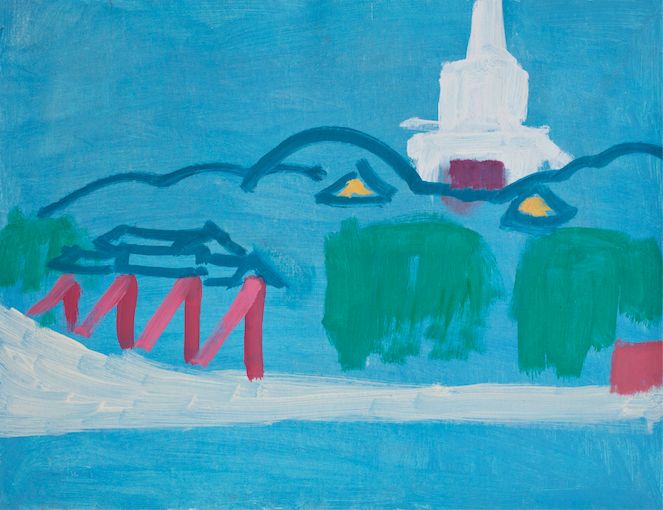
▲杨雨澍,《北海公园》,1983年,35×27厘米,纸板油画
本次展览的题目“新月”,取自成立于1923年的文学和政治团体“新月社”。这个以胡适、徐志摩、闻一多、梁实秋等为主要成员的群体,推崇相对自由和带有现代主义性质的创作和讨论,追求技艺和形式的先在性,与左翼阵营倡导的为无产阶级服务的文学有着极大的差异。这个广泛涉及文学、政治、思想和学术讨论的团体提出的诸多主张,在后来的左翼和社会主义论述中都被描述为有着资产阶级的倾向。左翼阵营与新月社的论战是20世纪30年代的一段公案;1949年之后,“新月”的声音逐渐成为潜流和低音,在社会主义现实主义美术的体制化和意识形态化进程中,它不再是一个具有丰富的文化和政治讨论内容的实体,而被抽象化为一种对立的价值观。从美术的创作方法上说,在社会主义现实主义中仍然可见“新月”的身影,它被部分地吸取到建立社会主义现实主义话语的实践中。但是,在这一权威框架的主导和“冷战”格局所导致的中西方阵营互相隔绝的状态下,它只可能在美学语言上代表形式多样的声音——对这一声音的压抑和审查也无时不在——而又不能离开现实主义的范围,因为它在哲学、思想、价值和话语层面的可能性受到了全面压制。“新月”中的“新”,和社会主义现实主义中对于“新人”、“新方法”和“新世界”的要求有着某种价值上的一致,但它在公共的主体建构中的在场却只能在形式语言的范围内体现,起到补充的作用或者处于潜逸的位置,这恰恰隐喻了1949年之后美术在政治历史进程中所扮演的角色,以及接受改造时所面临的境遇。
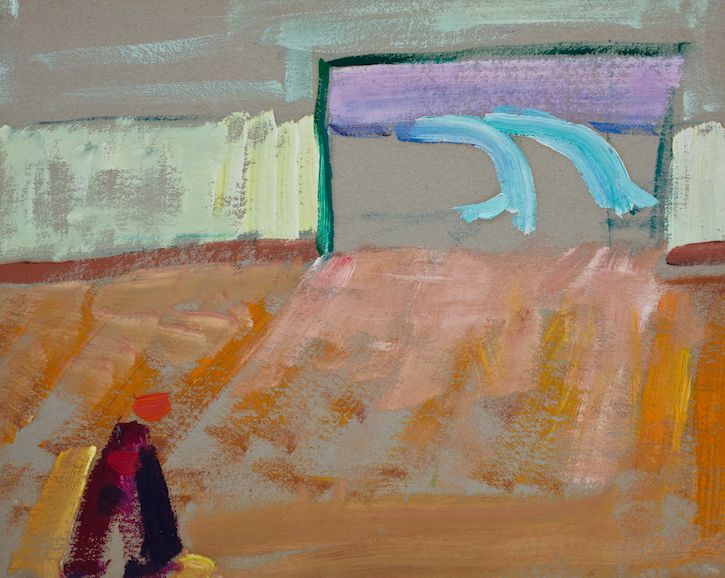
▲赵文量,《殉道者,梦》,1974年,21.5×27厘米,纸本油画
“新月”在时空转换中所具有的隐喻力量,为本次以赵文量和杨雨樹这两个创作个案为核心的展览提供了叙述入口。开展这项研究所面临的挑战是,既要完整、真实地还原两位艺术家在艰难的生活中开辟的艺术道路,在艺术和生活那种必要而非夸张的张力中叙述创作的故事;同时,他们的艺术生涯完整见证了1949年之后中国美术领域的体制化和话语流变,如何从历史批判的视角处理他们与权威框架的关系,也是这个展览在理论上面对的最重要的课题。围绕赵文量和杨雨澍的创作,“新月”展聚焦于美术在主体性被剥夺和获得位置的张力中显露出的创作者的心路和经验。通过重新想象历史中创作个体内在性形成的语境,这个展览期望与观众一起,探究如何面对历史转译的问题,并求教于今天艺术世界的实践者。

▲杨雨澍,《桃花小碗》,1973年,53.5×46.5厘米,三合板裱布油画
我们将在“新月”展期间举办一系列有美术和思想领域研究者参与的演讲和讨论活动,深入展开相关问题的讨论。展览前,我们还发起了一项驻留项目,招募和邀请一位艺术家和一位研究者来到中间美术馆,围绕赵文量和杨雨澍的画作、文献以及本次展览,推进自己各自领域的工作。您可以在驻留过程中接触到一千多幅画作。驻留申请截止日为2018年3月24日。
Crescent: Retrospectives of Zhao Wenliang and Yang Yushu
Curators: Su Wei, Feng Xi
Assistant Curators: Yang Tiange, Zheng Yahui
Opening: 2 pm, March 24, 2018
Exhibition Dates: March 24– July 1, 2018
Venue: Beijing Inside-Out Art Museum
Crescent: Retrospectives of Zhao Wenliang and Yang Yushuwill open soon at the Beijing Inside-Out Art Museum. This exhibition project revolves around the artistic practice of Zhao Wenliang and Yang Yushu, who were the central figures of the Yuyuantan School of Painting emerged in the late 1960s and the No Name (Wuming) Group in the 1970s. Zhao and Yang’s practice dates back to the 1950s and their entire work, which spans decades, offers us a unique insight into China’s social transformation and artistic revolution from the 1950s to the present day. The inevitable yet extraordinary contradiction between their life and art is deemed as a premise for the exhibition narrative. Through research, exploration, and historical re-imagination, this exhibition presents a series of interconnected theoretical issues that are still significant in China’s art world today and examines how suppressed historical and aesthetic experiences are formed, interpreted, and applied in today’s context of nihilism.
Zhao Wenliang (1937- , born in Harbin) and Yang Yushu (1944- , born in Beijing) were both born before 1949, when the People’s Republic of China was founded. Therefore, they have experienced the changes China has undergone in social history and artistic practices since 1949. The two met in the late 1950s when they were learning painting and their relationship has since been one of mentor and student as well as of friendship. They have had a hard life, struggling financially, and painting has been the most important thing for them and their only hope. They shared a small unit in Fangzhuang, Beijing from 1992 to 2011 and then moved into an ordinary residential block near Yayuncun, Beijing.
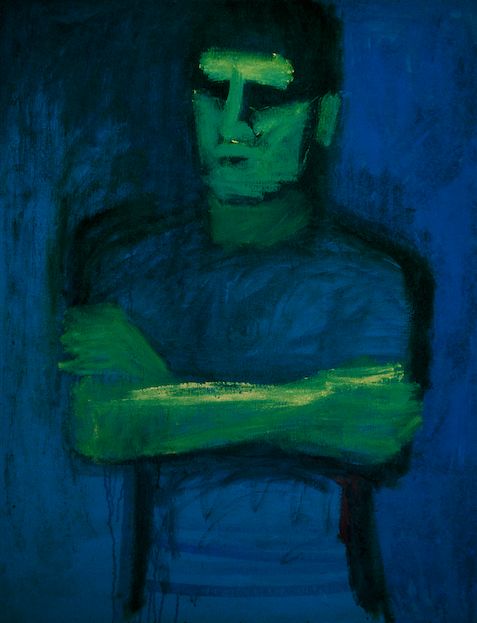
▲Zhao Wenliang, Bronze, 1980, 119×91.5cm, oil on board
From 1963 on, Zhao and Yang focused increasingly on painting en plein air. During this time, Zhao and Yang met some young painting enthusiasts, who, drawn to their style, began learning from and painting together with them. Together they formed loosely the Yuyuantan School of Painting. Zhao and Yang got to know another group of young amateur painters in the 1970s and they all continued painting under the trying political circumstances at that time. Zhao and Yang played the role of mentor for these young painters, who formed the main members of the No Name Group. The No Name Group held a secret exhibition on December 31, 1974 and later two self-titled public exhibitions, one in 1979 and the other 1981. Indeed, Zhao and Yang have always strived to keep their own style and held themselves to demanding standards. Even in the 1980s when modern art movements were prevailing in China, Zhao and Yang did not drastically alter their own technique and style to follow the trend, but kept exploring and strengthening their own method that was formulated initially in the 1960s and 1970s. In fact, they consciously distinguished their work from what was popular; some of their paintings even had traces of classical Chinese philosophy and aesthetics in them.
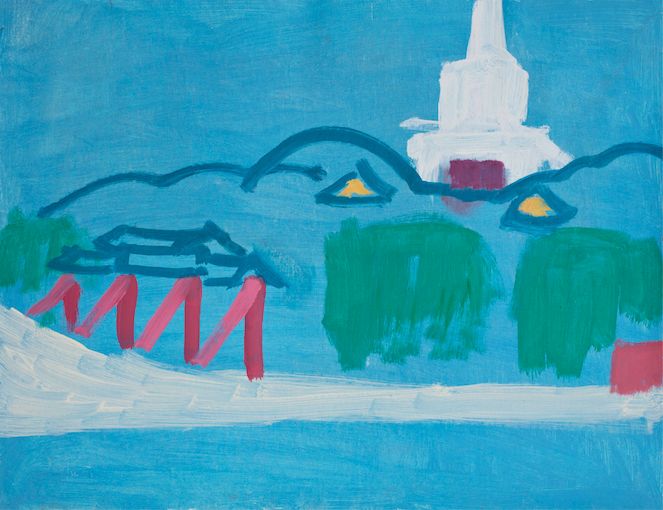
▲Yang Yushu, Beihai Park, 1983, 35×27cm, oil on paper
The title of the exhibition, Crescent, is borrowed from the name of the Crescent Moon Society, a literary and political group founded in the Republican era of China in 1923. The Crescent Moon Society promoted relatively liberal, modernist work and discussions and advocated the primacy of technique and form, thus contrasting sharply with the Left, who endorsed literature that served the proletariats. The Society expressed strong opinions in many fields from literature to political systems, to schools of thought, and to academic debates. Because of this, they were described by the Left and in socialist writings as pro-capitalist. After the People’s Republic was established in 1949, the voice the “Crescent Moon” represented became increasingly low and more of an undercurrent. Furthermore, as socialist realist fine arts turned institutionalized and became an ideological vehicle, this voice was no longer an entity that actively engaged in cultural and political discussions, but was gradually deemed as a set of values opposite to that of socialism. In fact, the influence of “Crescent Moon” could also be seen in the practices of socialist realist fine arts, as its formalistic appeal of artistic language were partly used in constructing the discourse of socialist realism. That said, although the presence of “Crescent Moon” can be found in the aesthetic field and was included in the framework of realism, it represented a voice only on the level of formalistic language in arts under the banner of diversity. Therefore, this voice was subjected to suppression and censorship at all time. This is due to the dominance of state power and the mutual exclusion of China and the West during the Cold War period. The role it could potentially play in philosophy, schools of thought, values, and discourses remained rather constrained on all fronts.
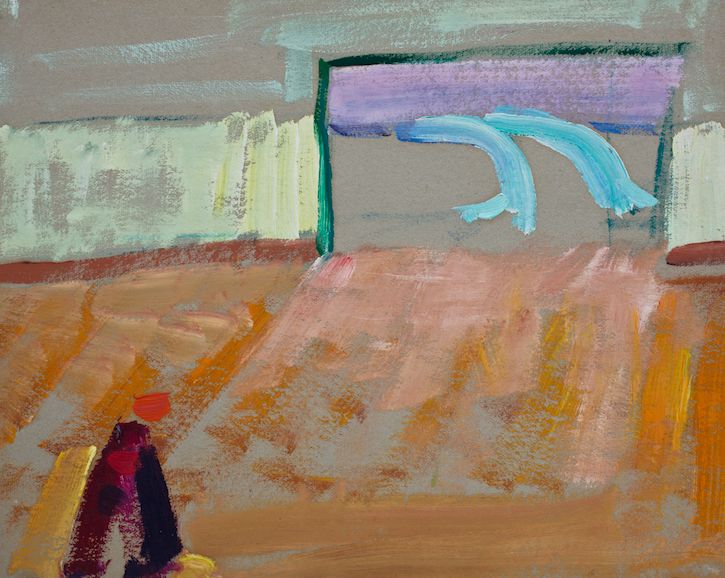
▲Zhao Wenliang, Martyr, Dream, 1974, 21.5×27cm, oil on paper
Crescent, as the title of this exhibition, is a metaphor that relates to changing times and spaces, a start of the story that we are telling here through these two individual artists. What is on offer is a three-dimensional perspective on their work.
A major challenge to us curators would be: how do we fully and truthfully tell these two artists’ story of making art in hard times? On the other hand, their work reflects the institutionalization and the changes of discourse in Chinese fine arts since 1949. How to consider these artists’ relationship with the authoritative framework of the state from a historical and critical perspective forms the most crucial theoretical task of this exhibition.

▲Yang Yushu,Peach Blossom and A Small Bowl, 1973, 53.5×46.5cm, oil on canvas
We will hold a series of talks and seminars by researchers and scholars of art and philosophy during the exhibition in order to discuss relevant issues in depth. An art and research residency program will also be launched, in which one artist and one researcher will be invited to work for a period here at the Inside-Out Art Museum in relation to this exhibition, the work of Zhao and Yang as well as the extant literature on them. More than 1,000 paintings are accessible during the residency. Application must be submitted by March 24, 2018.